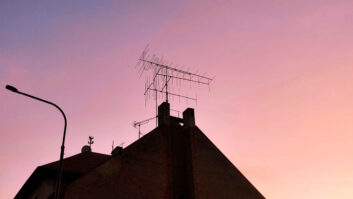
NEW DELHI — This month FM radio frequencies in the larger Indian cities drew extraordinarily high bids from private players by way of license fees. But the bad news is that, as of press time, some 13 cities were still yet to find any takers.
This is Phase III for private FM radio station bidding in the world’s second most populous nation.
Radio here has a lot of potential, thanks to factors such as linguistic and cultural diversity within the nation, a booming middle class side by side with significant illiteracy, as well as the government dominance of the medium (and consequent limited growth) until the 1990s.
Phase I for bidding by private players wanting to set up FM radio stations came in the late 1990s, covering just 21 private FM channels in 12 cities. The second phase was introduced in 2005, welcoming 243 FM channels in 86 cities.
Private players claim that FM radio in India reaches 40 million listeners in four metro cities and 350 million in 91 smaller cities and towns.
“Now, with Phase III, it will touch 90 percent of the (1.2 billion Indian) population, making it truly a common man’s medium,” chief executive officer Tarun Katial of the influential conglomerate media player Reliance Broadcast Network, part of one of India’s largest industrial empires, told media site afaqs.com
The latest auction details (Day 18, Round 72) released by the Indian ministry of information and broadcasting showed that FM frequencies in cities like Delhi (Rs.170 crore; US$27.9 million); Mumbai (Rs.124 crore; US$18.9 million); Bangalore (Rs.110 crore; US$16.7 million); Pune (Rs.42.5 crore; US$6.5 million) and Ahmedabad (Rs.43 crore; US$6.6 million) have gone for extraordinarily high amounts.
But 13 smaller cities and towns like Mysore, Mangalore, Pondicherry, Trichy and Vijayawada are yet to find any takers.
This is just the first batch of Phase III licenses to be auctioned; only 135 frequencies in 69 cities have been released in this group. And these 135 frequencies are mostly the “left-over” frequencies from Phase II. Some 680 frequencies are yet to be auctioned under Phase III. They will be auctioned in batches over the next two or three years.
Phase III licenses will be operative for 15 years. Foreign direct investment or foreign institutional investment of up to 26 percent is being allowed in these stations. (During Phase II only 20 percent of FDI or FII was allowed.)
“After the initial euphoria over bidding for frequencies to operate FM radio stations, bidding seems to have slowed down in the Phase III auctions,” the Indian Express newspaper reported on August 20. “Bidders are now keen on operating radio stations in metropolitan cities and tier-two towns.”
According to some industry specialists, “Most of the still unsold ones — about 500 or so — are in Group D (smaller) towns, and the chances of many of them being sold are remote, especially since the industry sees FM as a nearly obsolete technology, soon to be replaced by digital radio.”
So far, the government’s approach seems to be to earn revenue from cities that already have a glut of FM stations, while ignoring the social and cultural benefits of encouraging the growth of FM radio in small towns and rural India, where there is no local radio at all.
India has also made promises of setting up some 4000 community radio stations, but the federal government has barely managed to issue licenses to 226 community radio stations, of which 184 are operational (and quite a few of these are actually campus radio stations).
Prime Minister Narendra Modi, in his Independence Day speech, expressed satisfaction that his government was able to auction some 135 commercial FM frequencies for over Rs.1000 crore ($152 million), while claiming that there was pressure on him not to auction the frequencies. Modi said (in Hindi): “I was asked why we are auctioning FM radio, a medium, which is of use to the common man and doesn’t entail much earnings….”
But others say that the objections to auctioning FM frequencies might have some basis, pointing out that Rs.1000 crore is about one-third of what the state spends on the officially supported Prasar Bharati broadcaster each year.
“Rs.1000 crore is peanuts, compared to the great social and economic benefits that could accrue if FM frequencies were deployed in media-dark towns, rural and border areas first, where there is no local radio at present. That’s two-thirds of the country,” said community radio supporter Sajan Venniyoor.
FM radio in India — mostly AIR FM stations — covers about 30 percent of India’s territory and 45 percent of the population. Some observers feel that expanding FM coverage in deprived areas should be a priority, instead of continuing to sell frequencies in cities where FM is already well established.
So a city like Delhi, which already has eight private FM channels and three AIR FM channels (FM Rainbow, FM Gold and Vividh Bharati), all playing more or less the same kind of music, will now get one more FM channel.
By selling to the highest bidder, not allowing independent news and not insisting on diversity of language and programming, some could criticize government policy for having reduced FM radio to cookie-cutter stations all playing Top 20 film songs.
The Indian government argues that FM radio needs to cover the entire country, and says it has decided that every city with a population of 100,000 or more should be included in the auctions. Indian minister of state for information and broadcasting Colonel Rajyavardhan Singh Ratore said in an interview recently that such a policy would ensure that “there will be a large number of cities that will see the advent of multiple FM radio stations.” The government has promised a “transparent e-auction,” with external observers to monitor the auction.
Under Phase III rules, private FM stations will not be allowed to broadcast their own news, but can relay bulletins of the state-run All India Radio. Broadcasts pertaining to sporting events, traffic and weather, coverage of cultural events, festivals, exams, admissions, public announcements, natural calamities, health alerts will be allowed.
Private operators have been allowed to own more than one channel, but not over 40 percent of the total channels in a city, subject to a minimum of three different operators in the city. The networking of channels will be permissible within a private FM broadcaster’s own network across the country henceforth.
“The bids are not unrealistic but they seem to be pushing the bounds of realism…most of the players have bid very aggressively in the markets that are key media consumption markets,” said Nisha Narayanan, chief operating officer for Red FM.
“While we expected demand to go high in some major markets like Delhi, Bangalore, Chennai, Mumbai and the like, Bhubaneswar and Guwahati kind of emerged as a surprise. Delhi, Mumbai, Bangalore Chennai have also gone beyond reasonable prices. Looking at it from demand-and-supply angle, it looks like in some markets the bids have over shot. On the other hand, there are as many as 13 cities that have seen no bid and some of them are prominent cities. So yes, there are some surprises in this auction.”
More than surprises though, the question remains as to how well India can regulate its FM market and create a useful, varied radio landscape for the entire country. It may take years to find the answer.
Frederick Noronha reports on the industry from Goa, India.







